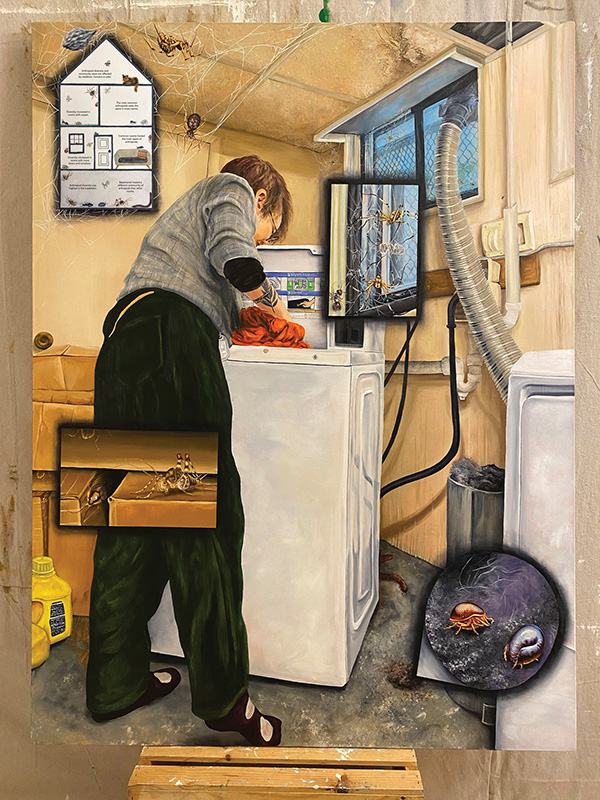Re-Examining Conservation: Questions at the Intersection of the Arts & Sciences
Brown University, Granoff Center for the Creative Arts • Providence, RI • creatureconserve.com • Through June 10, 2022

Like all of this writer’s favorite exhibitions lately, Re-Examining Conservation starts with questions rather than proclamations. Curated by Heather McMordie with support from curatorial scholars Haley Johnson (Mashpee Wampanoag) and Lynsea Montanari (Narragansett), this is the first of Creature Conserve’s three exhibitions aimed at restructuring (re-examining, re-imagining, and re-populating) our relationship with conservation. Among the sculptures, paintings, poetry, and video installations, the exhibition pushes us to reconsider “What is conservation?”
In the spirit of this exploratory reevaluation of a familiar topic, the media and approaches to the topic range from the acute to the referential. All artists were tasked with the challenge of visualizing the dynamics between human and animals. Duncan Berry’s ethereal Sitka Salmon (2022) illustrates the intertwined relationship of the Sitka spruce trees that receive an annual boost of much needed nutrients from the Chinook salmon’s decay after spawning season comes to an end. The salmon’s silhouette is achieved through an original impression of the spruce’s rings, linking the deep sea with the arboreal. Carina Cheung’s elegant and impossibly delicate blown glass sculptures of animal and plant forms speak to the fragility of increasingly endangered creatures and environments. As glass is a particularly environmentally-taxing medium, her tender works make clear how enmeshed we are in questions of conservation. Similarly, Eleanor Q. C. Olson’s charmingly familiar Basement Buds illuminates the many (and many-legged) friends that we cohabitate with, whether or not we’re aware of it. The robust selection of works vary widely in their answer to the curators questions; from addressing the shifting landscape to how we’re never far away (nor even distinct from) “nature.”
In addition to the exhibition’s unfolding across the Cohen and Atrium galleries, there is also a Book-Based Interactive Installation with an invitation to read, respond to, and write your own stories based on the queries of Creature Conserve’s exhibition. There is a collection of books aimed at all ages as well as prompts for kids to engage. This thoughtful level of interaction, coupled with scheduled symposia and workshops, voices the spirit of the larger project, that together “we have the power to shape conservation into a practice that is more accessible, meaningful, and relevant to all.”
—Elizabeth Maynard
